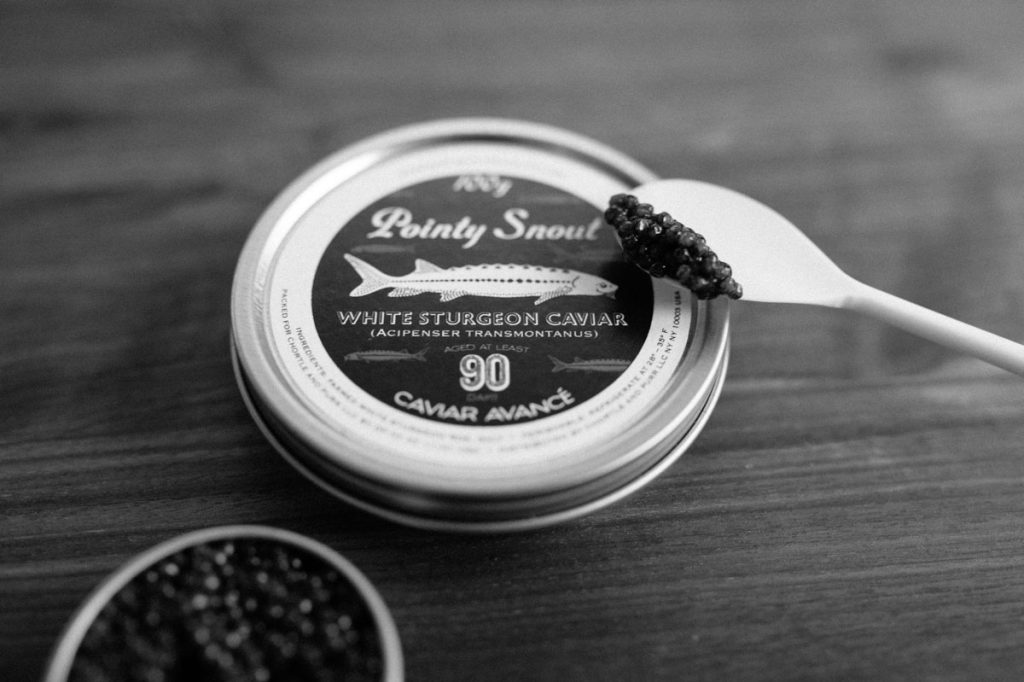Petrossian Caviar Master Class
Armen Petrossian and chef Giselle Wellman give a culinary lesson in California sturgeon

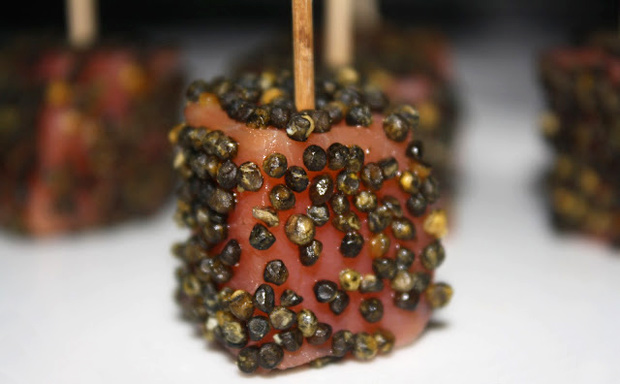
Often regarded as the ultimate indulgence, caviar consists of non-fertilized, salted sturgeon roe. The prehistoric sturgeon has become a significant symbol in Russian culture, but the depletion of the once-prevalent population in the Caspian Sea compelled the government to issue a ban on fishing in 1998, which was extended another four years in January 2012. As a result, farmed caviar has become the most viable option for meeting demand for the tiny, bead-like delicacy.
Three Transmotanus varieties farmed in Northern California have become best sellers for industry-leader Petrossian in their Beverly Hills store—Classic, Royal and Averta President. Armen Petrossian calls the Transmotanus—which means “crossing the mountains”—an “excellent large fish with good flesh and bountiful eggs.” We recently had the opportunity to take a caviar master class at the store to learn more about caviar’s ocean-to-table journey and sample a rich array of freshly farmed sturgeon roe.

Petrossian gets their supply from Sterling Caviar‘s Northern California farms, one of the first complete sturgeon aquaculture operations in the world. Sterling raises the fish in above-ground freshwater tanks that are monitored for water flow, oxygen levels and temperature and, during the caviar harvest—which this year began in early March—females deemed ready have their ovaries removed and eggs extracted. The eggs are carefully cleaned in cold water, weighed and then lightly salted and mixed by hand. The period from which the female is first identified on the farm to when she has her eggs removed lasts about eight years (during which time eggs are checked for color), but the actual process of removing the roe takes less than 30 minutes.
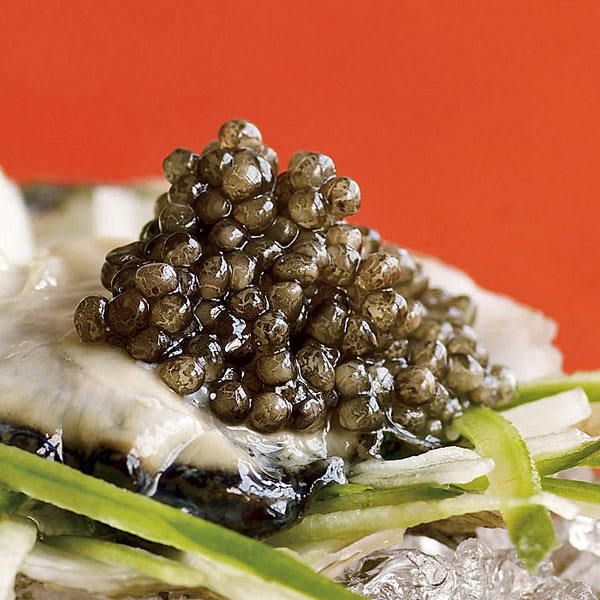

“Transmotanus is raised mainly in California, I prefer to call it California sturgeon caviar,” said Petrossian, describing the process of sorting and grading the fish to sell at its optimal state. “We also made a name for it—we call it Alverta. This is a very interesting caviar because it is a large fish, with good meat and eggs that is close in taste to the ones from the Caspian Sea. You get more flavor with age. The complicated thing with caviar is that no one fish is comparable to another. That means that even in the same family and the same place, you will have huge differences between one fish and another. The difficulty is to forecast each fish in order for you to have it at the best condition.”
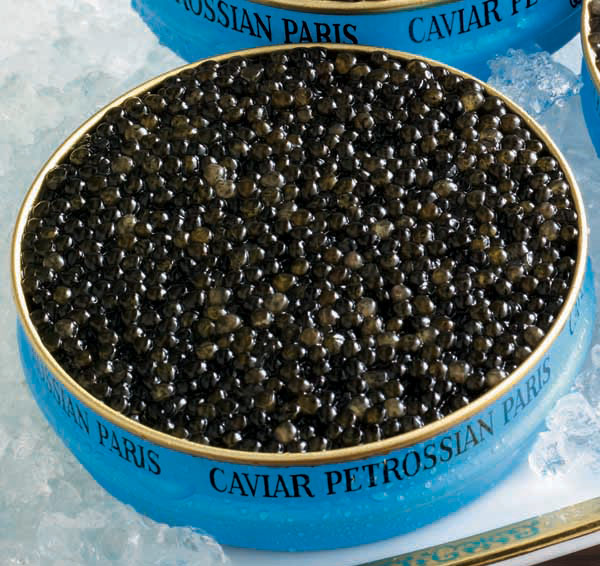
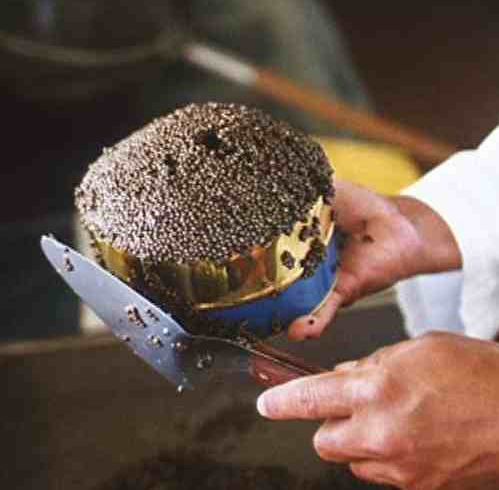
For the master class, chef Giselle Wellman created a five-course menu to celebrate the flavors of the sea and highlight some of Petrossian’s newest and most popular caviars. Chefs in the Petrossian kitchens have found inspiration in the nuanced flavors of the tiny eggs, and a standout dish was a house-made caviar-flavored fettuccini topped with light cream sauce and caviar.


The class included a tasting, which started with what Petrossian calls a “not caviar” paddlefish roe, followed by the American Hackleback, Royal Transmotanus, Alverta President, Tsar Imperial Siberian, Shassetra and Tsar Imperial Ossetra. The flight finished with a rich Kaluga ($481 for 50 grams), the progression offering a clearer understanding of the subtle differences in flavors and textures.
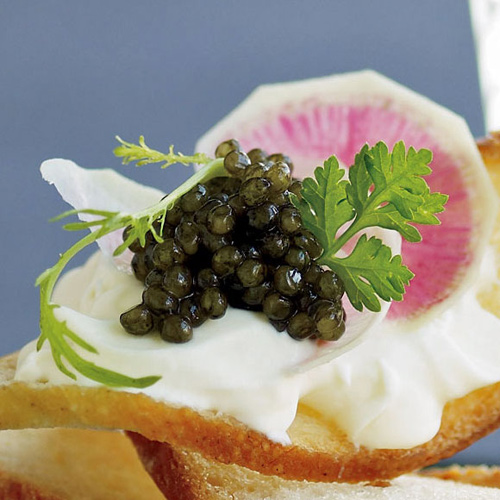
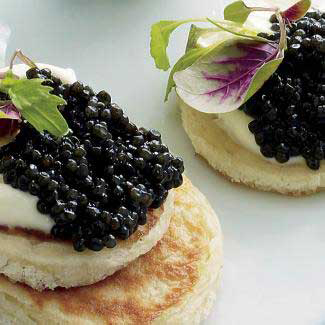
“What we are bringing is like when they are making a bag at Hermes,” says Petrossian on the quality of their product. “It is not only a nice piece of leather, or a good grape to make wine. It’s not just because you have the raw material called sturgeon roe caviar. You need to have specific knowledge and experience in order to know how to separate and grade the caviar. That’s our job, to create levels, to create the quality of the caviar and to create the grades.”

New in the Petrossian boutiques and online shop is Caviar Powder that offers the flavor of caviar with a longer shelf life. The powder can be eaten by sprinkling full beads or grinding the dried pearls into a powder that taste can be served with eggs, potatoes, pasta, smoked salmon or anything that would be more delicious with the addition of caviar flavor. Petrossian also makes Papierusse, which comprises thin sous vide sheets of caviar. Paired with a bubbly glass of champagne these creations are sure to induce decadent caviar filled dreams.
